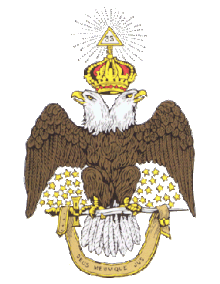| Part of a series of articles on Freemasonry | ||||
 | ||||
Core Articles Freemasonry · Grand Lodge · Masonic Lodge · Masonic Lodge Officers · Grand Master · Prince Hall Freemasonry · Regular Masonic jurisdictions · Continental Freemasonry History
| ||||
The Scottish Rite is one of the appendant bodies of Freemasonry that a Master Mason may join for further exposure to the principles of Freemasonry. InEngland and some other countries, while the Scottish Rite is not accorded official recognition by the Grand Lodge, there is no prohibition against a Freemason electing to join it. In the United States, however, the Scottish Rite is officially recognized by Grand Lodges as an extension of the degrees of Freemasonry. The Scottish Rite builds upon the ethical teachings and philosophy offered in the craft lodge, or Blue Lodge, through dramatic presentation of the individual degrees.
HISTORY
Note: Please read " Blog Participation Requested - Announcement - Education", which explains and describes the purpose of this series of topics. This post does not make a statement "for" the following content and does not make claim that it has a direct relation to Freemasonry. It is for educational purposes only! All credit given to for content obtained from Wikipedia, the free encyclopedia.
Tupelo Masonic Lodge No. 318 F&AM
HOME - http://www.tupelomason.org/
BLOG - http://tupelomason.blogspot.com/
PHOTOS - http://tupelomason.shutterfly.com/


No comments:
Post a Comment
Your comments and suggestions are not only welcomed, but are encouraged. However, keep your comments within the limits of good taste and please, no business promotions or hyperlinks that do not contain links to reputable Masonic material. Please see our Legal Disclaimer for more details regarding the Terms of Use. Violation of this policy will result in your comment being deleted and/or you being banned from future use of this website.